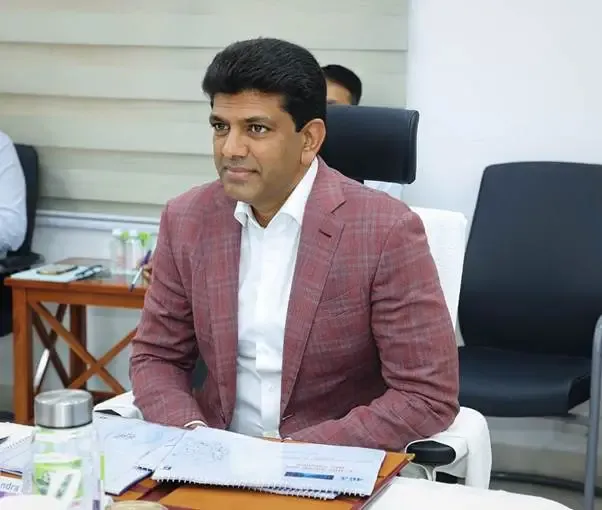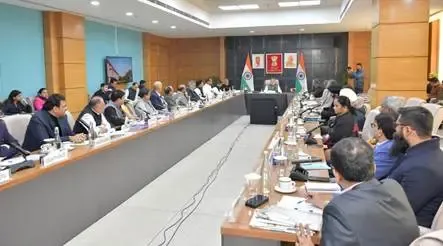Can C-DOT Rise to Join the Ranks of Global Tech Giants by 2047?

Synopsis
Key Takeaways
- C-DOT aims to align with global tech leaders by 2047.
- The SAKSHAM-3000 switch-cum-router offers a throughput of 25.6 terabits per second.
- Dr. Pemmasani Chandra Sekhar emphasizes internal ambition and future vision.
- India must transition from being a producer to a leader in technology.
- Increased participation in international standards organizations is essential.
New Delhi, July 4 (NationPress) The Centre for Development of Telematics (C-DOT) must strive to align itself with esteemed international tech titans such as Nokia, Ericsson, and Huawei by the year 2047, stated Dr. Pemmasani Chandra Sekhar, Minister of State for Communications and Rural Development.
In a pivotal move towards self-sufficiency and global competitiveness, Dr. Sekhar has unveiled the high-capacity SAKSHAM-3000 switch-cum-router, boasting a remarkable throughput of 25.6 terabits per second.
The SAKSHAM-3000 serves as a cutting-edge data centre switch-cum-router tailored for the next-generation digital landscape.
Dr. Sekhar praised the engineers at C-DOT, recognizing their contributions as “not merely technical but essential for nation-building.”
He highlighted India’s recent achievements, including a domestically developed 4G/5G (NSA) core, sophisticated disaster management systems, robust cyber security solutions, and advancements in Quantum communication, noting that “C-DOT has embarked on a new era — one focused on delivery, implementation, and global aspirations.”
“The vision must originate internally,” Dr. Sekhar urged, encouraging engineers to look beyond immediate deadlines and envision the nation’s needs five years ahead.
“This distinction defines the difference between merely participating in a project and actively shaping the future. Let’s transition from mere success to true significance. Our goal is to cultivate a C-DOT that is esteemed not only within India but recognized globally. The nation stands behind you,” he emphasized.
He stressed the importance of India becoming a leader in technology rather than just a producer. “By 2047, C-DOT should be competing alongside global leaders like Nokia, Ericsson, and Huawei,” he remarked, assuring that the government would back this ambition through increased autonomy, funding, and partnerships.
Moreover, he encouraged more involvement in international standards organizations such as 3GPP, ITU, and ETSI.
The SAKSHAM-3000 is characterized as a “future-ready platform” suitable for both legacy and cloud-native networks. It supports Layer-2, IP, and MPLS protocols while being energy-efficient and prepared for time-sensitive applications through PTP and Sync-E.
Designed with flexible licensing options, high reliability through hot-swappable power and fan units, and advanced Quality of Service (QoS) features like WRR (Weighted Round Robin) and WRED, this platform aims to meet the evolving demands of large enterprises, telecom operators, and hyperscale data centres.








